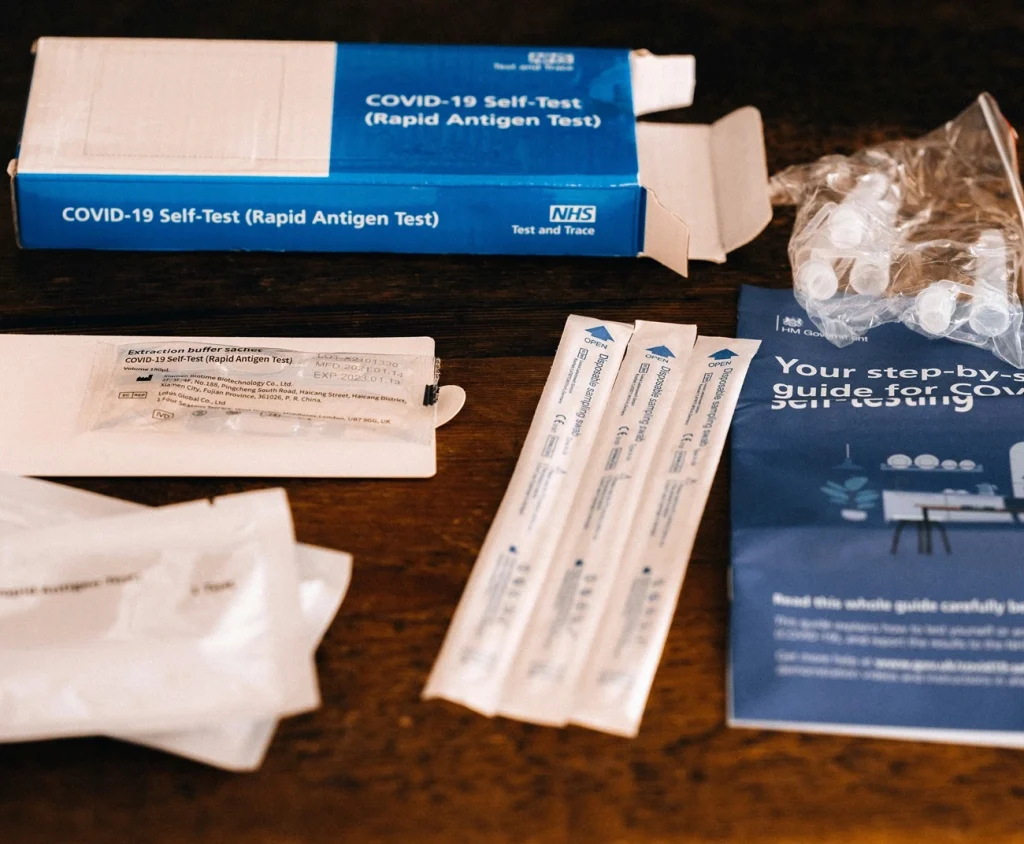What is RAD?
Rapid Application Development, or RAD, is a speed-centered and agile development approach in software development. Being said, it handles software development differently, emphasizing on continuous iteration, quick prototyping, and user feedback rather than waterfall approach.
By focusing on these alternatives, RAD aims to reduce development time and costs, allowing faster time-to-market and adaptation to changing requirements. Applying RAD, many businesses achieved impeccable results, including giants such as ANZ Bank, BHP, Coca-Cola Amatil, Hong Kong Jockey Club and numerous others.

Being built based on the James Martin method, there are 4 phases in RAD:
1. The requirements planning phase includes managers and developers to agree on the project scope, business needs, constraints, and other requirements.
- Identify project goals and objectives.
- Gather and document user requirements.
- Create a clear vision of the desired software functionality.
2. User design phase creates prototypes that describes the future application. This continual interactive phase allows developers to comprehend, edit, and refine their work.
- Collaborate closely with end-users to design prototypes.
- Develop mock-ups and user interfaces for feedback.
- Iterate and refine designs based on user input.
3. Construction phase focuses on program and application development tasks.
- Build the software application using rapid development tools.
- Focus on creating functional components and features.
- Continuously integrate user feedback and make enhancements.
4. Cutover phase is the final step in delivering and deploying the software. It includes:
- Transition the application to production.
- Perform testing, debugging, and quality assurance.
- Provide ongoing maintenance and support for the software as needed.
Other than speed, RAD also brings many benefits:
- Improved User Satisfaction: By allowing businesses to interact with end-users through constant feedback, you can quickly make any necessary changes, ensuring the software meets expectations.
- Enhanced Agility: RAD’s iterative approach makes adapting to changing requirements more straightforward and responds better to market shifts and customer demands.
- Cost Efficiency: Reduced rework and shorter development cycles can save costs.
- Innovation Facilitation: RAD empowers organizations to innovate and stay competitive.
- High-Quality Solutions: Continuous feedback and refinement result in better software quality.
- Superior Quality: RAD focuses on usability and addressing business challenges over technical issues, leading to higher software quality.
- Effective Risk Management: RAD identifies and mitigates major risk factors early in the process, based on empirical evidence, reducing project risks.
- Satisfied Outcome: Incremental construction in RAD reduces the likelihood of catastrophic failures, allowing for early identification and resolution of issues requiring significant system rethinking.
What is low-code?
Low-code is a user-friendly approach to software development that allows speedier delivery with minimum human coding.
One of the standout characteristics of low-code is its drag-and-drop feature that automates development process elements, removing the need for programming procedures. Thanks to this, low-code makes app creation more accessible. These technologies enable less technical staff to have a bigger impact on the business in various ways, including lowering IT backlogs, minimizing shadow IT, and taking more ownership of processes.

It offers greater flexibility in a developer’s coding background because it requires little to no coding skills. Low-code platforms shorten the application development process, allowing developers to do more tasks in less time.
For a more in-depth exploration of low-code specifics, types, and features, refer to this article
Comparing low-code vs rapid application development
Low-code is a technology, while rapid application development (RAD) is a step-by-step method to follow. Whereas low-code development is more closely associated with a specific development platform, rapid application development is a catch-all phrase for a modern adaptive software strategy.
In contrast, RAD is often used by professional programmers. Developers frequently meet with business experts for feedbacks and testing the prototypes. Then they will finalize the application themselves. This will lead to 2 things: (1) you have a well-executed application or (2) the developers still stay out of touch and can’t fully understand the needs.
Low-code, on the other hand, allowing business users (or the so-called citizen developers) to create software themselves or diving deeper in the process (not standing from a far like RAD). They can use low-code to express their idea or test the idea before asking developers to finalize it. This way, you can make sure your app is both business-oriented and strong in technological aspect.
Having said that, low-code tools certainly aid in the RAD process. Read on to learn more about how low-code benefits each phase of RAD.
How low-code boost rapid application development
As I have mentioned above, RAD has a set of four steps. But how can you use Low-code side-by-side during each phase of RAD? Or a better question: how can Low-code make RAD possible and effective?
Phase 1: Establish project specifications
During this stage, developers, software users, and stakeholders will work together to research, define, and finalize the project’s scope, requirements, timelines, and budgets. Through discussion, stakeholders or business users present their matter/needs/requirements, while developers contribute tech logic to finalize these requirements.
One advantage of the RAD approach is its flexibility. You can switch gears anytime during the development cycle to save time. But we recommend not doing so. The more detailed your plan is, the better you manage and adopt RAD.
How Low-code helps RAD: You can quickly use low-code to sketch your app, just a demonstration of the initial idea to present to your team. With its ease of use, any non-technical user can utilize low-code. This helps them explain their scope better to developers, boosting effective communication between technical and non-technical.

Phase 2: Make prototypes
Next, your team starts creating models and prototypes. The idea is to quickly generate a simple, functional model to present to the stakeholders. Try to get end-user feedback and analyze it because it helps your team function rationally rather than in an abstract design.
Keep in mind that during the second phase, developers are granted the opportunity to devise solutions as much as possible without compromising quality.
How Low-code works with RAD: Again, with pre-built code blocks, developers can quickly assemble a POC or MVP in a matter of days. Some low-code platforms offer automatic testing, meaning you can build along with test, reducing potential errors and cutting time on the second phase.
Also read: Find Bugs in a Minute with 14 Low-code Test Automation Tools
Phase 3: Build, test, and incorporate feedback
Having a functional prototype in hand, the next step is to transform it into a fully operational model. Developers collect user feedback and proceed with building it. The prototype and beta systems evolve into a functional model through application coding, system testing, and unit integration.
How Low-code Rapid Application Development helps: The use of low-code and rapid application development tools enables swift adaptation to any necessary changes. Thanks to RAD & Low-code, the number of errors is typically minimal, as most issues are identified and addressed in real-time.
Phase 4: Finalize and implement
The last phase is all about refining your project: (1) make sure it checks out all requirements and (2) ensure the performance and usability of the product. Afterwards, you can now employ the application across the department or launch it for commercial use.
But it doesn’t stop there. Post-launching still requires maintenance and daily checking. Despite multiple tests during development, the system can still mess up and bugs that you never think of will appear.
How Low-code helps: Developers can make instant fixes without interfering with the software’s performance and functionality thanks to low-code. Many platforms provide sandboxing, allowing you to upgrade and test in silence before launching the new version and disrupting current users.
Using Low-code and RAD, your software development productivity will certainly increase by a factor of two. Most low-code platforms produce boilerplate code where you can easily reuse and make alteration, improving the effectiveness of the entire development team.
In brief, low-code technology enables you to focus on the most critical aspects of the product while automating everything else. Low-code can fasten RAD than each does alone.
When to combine low-code & RAD
1. When you test your prototypes consistently
Rapid application development is an excellent technique to follow when you have a group of users who can provide consistent and reliable feedback on the prototypes you create. Because quick application development prototypes rely on input from earlier iterations, reliable feedback from dependable sources can be highly beneficial.
2. When you have a budget
When contrasted, rapid application development is typically inexpensive, although there are some cases where the advancements can be costly due to RAD characteristics such as recruiting talented workers.
3. When you have a tight deadline
Rapid application development is good to avoid a tight deadline. Rapid application development employs an on-the-fly methodology, which makes sense for rapid development that may pivot on a dime.
How we created an HRM system with low-code & RAD under 8 weeks
Leveraging the best of both worlds, we have helped one of our peers, an IT services company, to build a HRM system for 300 employees in under 8 weeks.
Being the gold partner of Microsoft, we utilized Microsoft Power Platform to automate all manual HR processes into a digital and high-functional platform. To cut down time on development, we embedded RAD through agile methodology by doing continuous iteration, side-by-side testing, and weekly discussions with the client for feedback.
This fast but focused process finalized a robust HRM system, proven by our clients’ recorded increases in performance and employee satisfaction. To learn more about their story, you can visit our portfolio here!
Want to build an application customized to your specific need in the blink of an eye?
Many businesses have worked with us to deliver such things and successfully accelerate their operation through innovative tools. Our low-code services, ranging from mobile, web to cloud development, serve the needs of business across industries and all sizes.
Wrapping up
Low-code development expressly refers to a visual programming trend that enables domain specialists to create their own applications and workflows. RAD, on the other hand, is a broad strategy that tries to modernize classic waterfall development cycles through rapid prototyping and user testing. Using Low-code Rapid application development can enhance efficiency, as both focus on the same goal!
More related posts from Low-code blog you shouldn’t skip:
- 5 Potential Security Risks of Low-code & How To Address Them
- How Low-code and DevOps Blend Together: Use Cases & Strategies
- Low-code & Agile Development: A Match Made In Heaven
How useful was this post?
Click on a star to rate it!
Average rating / 5. Vote count:
No votes so far! Be the first to rate this post.




